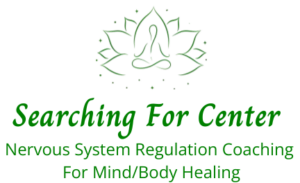When we think of memory, we usually imagine the stories we can tell: what happened, who was there, how old we were. These are cognitive memories — the kind we consciously recall.
But there’s another kind of memory that often goes unnoticed: somatic memory. This is the body’s memory, carried not in words but in sensations, impulses, and emotions. Somatic memories may not tell us the full story of what happened, but they hold the felt experience of the past. Until I began training in somatic experiencing and having to do my own personal sessions, I didn’t fully understand what this meant.
The Jaw as a Doorway to Memory
For me, one of the clearest examples has been my jaw. It began years ago with the grinding of my teeth. I had issues with grinding my teeth even in the day. I had to replace a crown twice due to breaking it. I spoke of it to drs and they would say “stress”. While true, it was stress, what wasn’t talked about was how my jaw was holding this stress and was asking to be allowed to speak. When I began to become more aware of environmental sensitivities like mold, the sun, heat, my jaw would push forward in little “tics.” My body had progressed from grinding to moving my jaw forward. It wasn’t a full release, just an incomplete impulse — almost as if my body was trying to say something it couldn’t finish.
Later, when I explored TRE (Tension & Trauma Release Exercises, developed by David Berceli), the movement deepened. My jaw engaged through an entire session, but interestingly, my mouth never actually opened. Again, it was like the body had more to say, but the story wasn’t complete.
It wasn’t until I began training in Somatic Experiencing (SE) that the picture sharpened. During a session, my jaw response appeared again — this time linked to an emotion of shock. My mouth kept opening and my neck twisting. I saw different images and attached was an emotion of shock. Suddenly, the movement wasn’t random. It had meaning, context, and emotional truth. My body wasn’t just twitching; it was remembering. My body felt safe enough to allow it to fully surface.
And looking back, it made sense. But through SE, I began to understand: my nervous system was holding onto unfinished survival energy. The grinding was my body’s way of replaying something that had never been resolved.
How the Nervous System Stores Trauma
This is what makes somatic memory so important. Trauma doesn’t just live in the mind but also in the body.
Under normal circumstances, the brain’s hippocampus helps us store memories as clear, chronological events. But under stress, the hippocampus goes offline, and the amygdala, the brain’s alarm system, takes over. Instead of creating a neat story, the nervous system records raw data: fear, tension, impulses to fight or run.
That’s why trauma often shows up as unfinished survival responses.
I once found myself yelling and punching into the air during a session. I wasn’t thinking of anything at the time — but my body was reliving a moment when a childhood bully followed me home. I had never fought back. But decades later, my body remembered the urge to defend itself, and SE gave me the chance to complete that unfinished response.
This is how SE works: by helping the nervous system complete the story it never got to finish. When the punch lands, the yell is voiced, or the jaw finally releases instead of grinding, the survival energy can settle.
Cognitive memory records the facts. Somatic memory records the survival impulse. Healing requires both.
My Stories of Repair
Healing through Somatic Experiencing doesn’t always look like what people expect. Sometimes it’s tears or trembling; other times, it’s laughter or warmth. What makes it powerful is that it feels real to the body.
One of my most vivid moments came when I “stood up” to this childhood bully I spoke about. My body yelled, punched, and finally saw him fall to the ground. I felt a rush of pride — the pride of defending myself, even though I hadn’t been able to back then. In those moments, the jaw that once held shock and grinding impulses could finally open, shout, release.
Other times, the repair was lighter. Once, after a wave of crying and fear, my mind drifted to a funny memory of ducks I had seen at a park. My body was learning to pendulate between a stressor and a pleasant memory. It started laughing uncontrollably. It was as if the nervous system, having finally released tension, could choose joy instead.
Not every session ends with dramatic breakthroughs. Sometimes it’s small shifts, a deeper breath, a loosened jaw, a night without grinding. But these micro-repairs add up. Each one teaches my body: You’re safe now. The story can end differently this time and the trauma loops begin to heal.
Why This Matters
Cognitive memory gives us the story. Somatic memory gives us the felt truth. Both matter, but somatic memory is often the missing piece in trauma healing.
By listening to my body’s memories — the jaw clenching, the grinding, the tears, the instinct to fight back — I’ve begun to access parts of myself that words alone could never reach. Each time the body completes a story, there’s a little more space, relief, and resilience.
Somatic memories may not come in neat narratives, but they carry the raw material of healing. When we let the body speak, we discover that even if the mind has forgotten, the body remembers the way toward repair.

